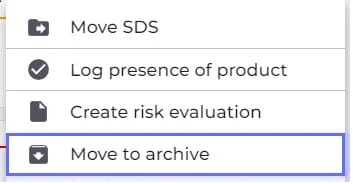Archiving Unused Product SDSs
Products that are no longer in use present a unique challenge; while they are not actively handled, the information pertaining to their safety, handling, and potential hazards remains significant, especially for historical exposure and regulatory compliance purposes.
Why Archive?
Archiving the SDSs for products no longer in active use serves several key purposes:
- Regulatory Compliance: Even if a product is no longer in use, historical data may need to be accessed to comply with regulatory requirements or to respond to health and safety inquiries.
- Safety Management: Should any question arise about past exposure to a chemical, archived SDSs provide a vital reference for health and safety officers, medical personnel, and regulatory bodies.
- Efficient Information Management: Keeping your active SDS library streamlined and relevant improves the efficiency of safety information management. Archiving helps separate current data from historical data, making it easier to navigate and manage.
- Archived SDS are excluded from the active Safety Data Sheets count, and SDS Manager only charges for active Safety Data Sheets currently in use.
